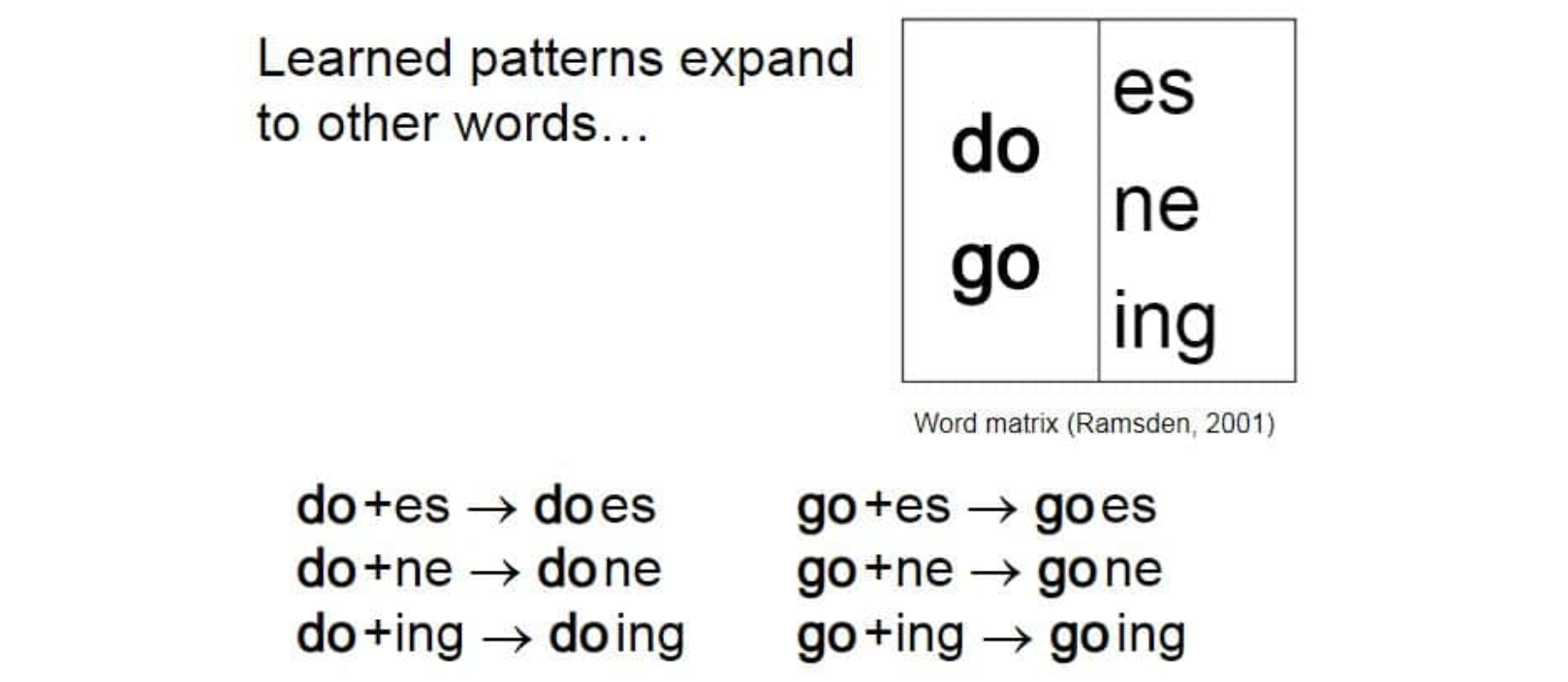Welcome to Matrix Education
To ensure we are showing you the most relevant content, please select your location below.
Select a year to see courses
Learn online or on-campus during the term or school holidays
Learn online or on-campus during the term or school holidays
Learn online or on-campus during the term or school holidays
Learn online or on-campus during the term or school holidays
Learn online or on-campus during the term or school holidays
Learn online or on-campus during the term or school holidays
Learn online or on-campus during the term or school holidays
Get HSC exam ready in just a week
Select a year to see available courses
Science guides to help you get ahead
Science guides to help you get ahead

By Year 3, Australian spelling curricula expect students to have a good understanding of morphemic word families. While the word “morpheme” sounds like it jumped right out of a science fiction book, don’t let the jargon fool you. Morphemes are one of the most basic building blocks of the English language, and are crucial for even the most basic spelling operations. In fact, every Year 3 spelling word list contains hundreds of morphemes. So, what are they? And more, importantly, how can your child begin using them to fast-track their spelling?

Expand your child's vocabulary with this spelling list

Fill out your details below to get this resource emailed to you.
"*" indicates required fields
Morphemes are essentially the building blocks of words. Every single word is made up of one or more morphemes. A morpheme can be a single letter or more, but most importantly, every morpheme carries its own meaning. This means that adding or removing a morpheme from a word can change its definition.
For example, let’s look at the word “dogs.” In this word, we have two morphemes: “dog” and “s”. “Dog” is a morpheme because it has a meaning on its own; it refers to a furry animal. And the “s” at the end of “dogs” is also a morpheme because it adds meaning to the word; it indicates that there is more than one dog. While the “s” morpheme is commonly used to create plurals, some morphemes can totally change the meaning of a word.
For instance, the morpheme “un” can be added to “happy” to form the word “unhappy”. In this case, though the morpheme in question is only two letters, it is capable of completely reversing the meaning of the original word.
Let’s now take a look at how multiple morphemes can be combined to make more complex words. Consider the word “auditorium”:
When we put these morphemes together, “audi” and “tor” combine to form “auditor,” which refers to a person who listens or hears. Then, the suffix “ium” is added to create “auditorium,” which means a place or venue designed for people to listen or hear, typically used for performances, lectures, or presentations.
Evidently, morphemes are the building blocks that make up language. Accordingly, the Australian Year 3 Spelling curriculum requires that students know a range of individual morphemes and can use them to piece together the spelling (and meaning!) of bigger words, even ones they’ve never seen before. So, what are the different kinds of morphemes, and how do they work?
Now that we understand what a morpheme is, let’s take a look at the different types of morphemes:
The Year 3 Australian Spelling curriculum requires an understanding of common prefixes and suffixes for several reasons:

Let’s take a look at an example of how knowledge of affixes can improve vocabulary expansion and comprehension. Consider the prefix “sub”. This particular morpheme usually means “under” or “below”. A student who understands this will quickly be able to decipher a number of words containing this prefix, even if they’ve never seen them before. Let’s now see how this knowledge would transfer to Year 3 NAPLAN questions on unknown words:
Most Year 3 Spelling students will already understand that the base word “way” refers to a path, track, or road of some description. By adding the meaning of the prefix “sub”, students can quickly intuit that a “subway” is some sort of path that is “under” or “beneath” – perhaps underground!
Again, many Year 3 Spelling students will already know the base word “marine” has something to do with water or the ocean. By adding the prefix “sub”, students can quickly infer that a “submarine” is a vehicle that travels underwater.
Clearly, when it comes to deciphering unfamiliar Year 3 Spelling Words, Australian students who are familiar with common affixes will excel. With this in mind, don’t just download any old word list. Instead, play the spelling game smart, not hard. Encourage your child to recognise patterns, and develop a morphological awareness of the affixes they encounter. Moreover, if you’re ready to begin your child’s journey toward becoming a prefix prodigy, download our “Affix” word list below!

Download your Year 3 Spelling -
Top 10 "Must Know" Affixes!
Boost your child's Year 3 Spelling and Vocabulary!
© Matrix Education and www.matrix.edu.au, 2023. Unauthorised use and/or duplication of this material without express and written permission from this site’s author and/or owner is strictly prohibited. Excerpts and links may be used, provided that full and clear credit is given to Matrix Education and www.matrix.edu.au with appropriate and specific direction to the original content.